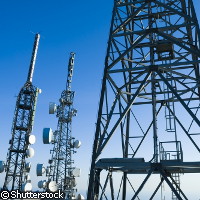EU project makes breakthrough in short-haul transceiver technology
An EU-funded project is providing telecommunications (telecoms) operators with a simpler way of upgrading optical telecoms networks directly to 100 gigabit Ethernet (GbE). Trials of the technology developed in the HECTO ('High-speed electro-optical components for integrated transmitter and receiver in optical communications') project have demonstrated that 100GbE networks can be deployed in a simpler capacity than before. The project was funded to the tune of EUR 2.36 million under the 'Information society technologies' Thematic area of the Sixth Framework Programme (FP6). The eight-partner project, which kicked off in 2006 and has just concluded, aimed to develop photonic components, particularly transmitters and receivers for high-performance, high-speed and cost-efficient communication systems. Coordinated by the Finnish telecoms provider Nokia Siemens Networks, HECTO brought together experts from academic institutions, research institutes and SMEs (small and medium-sized enterprises) in Denmark, Germany, Greece, Finland and Sweden. Nokia Siemens Networks used its extensive experience in the project's high-transmission trials, systems evaluation lab experiments and field trials. It also served as the interface between the project and telecoms standardisation organisations. The consortium's main work centred on developing packaged transmitters and receivers for optical systems based on 100GbE signals, determining specifications for all interfaces of the photonic components, and identifying application areas for the components and their impact on the specifications. The HECTO partners also carried out tests on the packaged transmitters and receivers in laboratory system test-beds. HECTO successfully developed a method that cuts the number of transceivers (the components that send and receive pulses of information carrying light) for 100GbE network links of less than 40 kilometres. Thanks to the new HECTO technology, telecoms operators will be able to provide short-haul 100GbE using only one single wavelength transceiver rather than using four at four separate wavelengths, which is the current procedure. '100GbE is the next big step in the networking world, bringing the additional capacity that will be needed for new bandwidth-hungry applications and the widespread adoption of smart devices,' said Rainer H. Derksen from Nokia Siemens Networks. 'The HECTO approach is ideal for short-haul transmissions because it does not require the complex transceivers needed for longer distance network links. 'At the same time, it meets the increased capacity demands in the metro and access portions of the network. This landmark project fits well with our vision of using innovation to help operators upgrade to 100GbE without major network investments.' The consortium members now have plans to exploit the project's results through their SME members. Other HECTO project partners include the Swedish groups Royal Institute of Technology (KTH), Acreo AB and Syntune AB, the Germany-based Fraunhofer Heinrich Hertz Institute, Fraunhofer Institute Applied Solid State Physics, and u2t photonics AG, as well as DTU Fotonik of Denmark, and the University of the Peloponnese in Greece.
Countries
Finland



